The Surin Islands
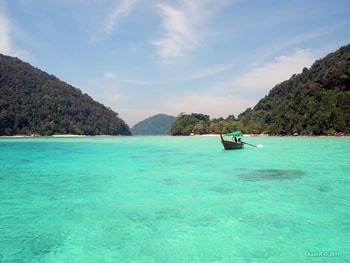 The Surin Islands are a small archipelago located approximately 60km off the west coast of Phang Nga. The area was declared a marine national park in 1981. The islands are a beautiful collection of sandy beaches, enclosed bays and forested land criss-crossed with hiking trails. The islands are beautiful, the surrounding sea is stunning. The turquoise waters are home to coral gardens and a plethora of sea life. There are some simply perfect snorkelling locations and further offshore some world class scuba diving sites.
The Surin Islands are a small archipelago located approximately 60km off the west coast of Phang Nga. The area was declared a marine national park in 1981. The islands are a beautiful collection of sandy beaches, enclosed bays and forested land criss-crossed with hiking trails. The islands are beautiful, the surrounding sea is stunning. The turquoise waters are home to coral gardens and a plethora of sea life. There are some simply perfect snorkelling locations and further offshore some world class scuba diving sites.
Mu Koh Surin National Park comprises five main islands. The two biggest islands are Koh Surin Nuea (North Surin Island) and Koh Surin Tai (South Surin Island). The two main islands are separated by a sea channel only 250-metres across. The three smaller islands all have an official name and a local name. They are Koh Torinla (Koh Kai), Koh Ree (Koh Satok) and Koh Klang (Koh Pachumba).
|
||||||||||||||||
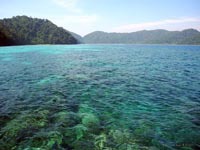 |
||||||||||||||||
 |
||||||||||||||||
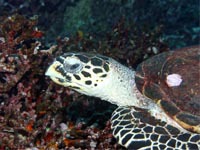 |
||||||||||||||||
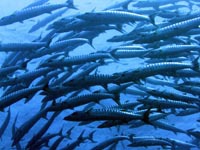 |
||||||||||||||||
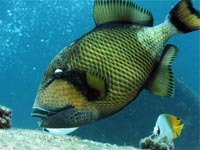 |
||||||||||||||||
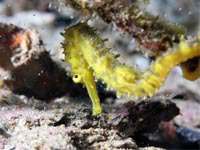 |
||||||||||||||||
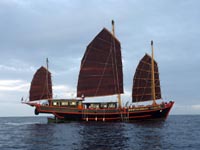 |
||||||||||||||||
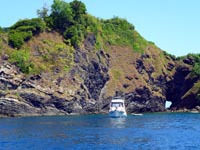 |
||||||||||||||||
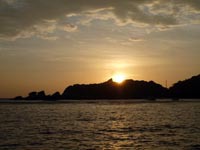 |
||||||||||||||||
The marine national park covers an area of approx 141 sq km of which 80% is sea. The entire Surin archipelago is 320 sq km. It also includes the small islands of Koh Tachai and Koh Bon to the south although they are not part of the protected national park area. A further 90km south are the Similan Islands. The Thai-Burma ocean border is located only a few kilometres to the north of the Surin Islands.
The Mu Koh Surin National Park also includes the world renowned dive site at Richelieu Rock. This submerged pinnacle some 18km southeast of the Surin Islands is often rated the finest scuba diving site in all of Thailand.
When describing the Surin Islands, you hardly know where to start to capture the full appeal and natural beauty of this location.
The islands are mostly uninhabited but there is a small community of Moken Sea Gypsies at Bon Lek Bay on South Surin Island. They have lived here for several generations and the community consists of only around 50 families or 200 people. They live a subsistence existence deriving most of what they need from the sea. Strictly speaking their fishing activities are illegal now the area is a national park but the Mokens were here long before the area was made a national park and their activities are not considered a threat to the environment as their numbers are small.
The national park has an HQ on the southern side of North Surin Island in Chong Kad Bay. You should note that since the islands are a national park there is an entrance fee when you arrive which is 200-baht for foreigners. At the park HQ there is a shop, restaurant, campsite and a few bungalows. You can buy Moken Sea Gypsy handicrafts at the shop.
Terrestrial Wildlife: The islands are covered in forest that provides a home for a variety of wildlife. There are hiking trails across the islands. One of the most spectacular species you may see is the large monitor lizards that can grow up to three metres long. The islands are also home to pig-tailed macaque monkeys, flying fox bats, reticulated pythons and many species of birds.
Snorkelling: The islands are beautiful enough but the surrounding sea contains some of the very best snorkelling you could hope to find. The islands are fringed with pristine coral reefs. The remote location and national park status mean these reefs are barely touched by human activity. Even the 2004 tsunami did only minor damage to these reefs. Some of the coral colonies are hundreds of years old.
These coral gardens are home to a wonderful variety of colourful reef fish. Great parrot fish patrol the reefs while little fella's dart in and out of the anemones. The great thing about snorkelling the Surin Islands is that there are reefs to cater to all standards of swimmers and the snorkelling is great at all of them. There are shallow, gently sloping reefs close to shore for novice snorkelers. The more advanced swimmers can swim out to the deeper reefs where there will be larger fish.
The Surin Islands are possibly the best place in Thailand to see turtles and many of them come so close to shore that snorkelers have a chance to see them. Four different species of sea turtle are known to frequent the waters around the Surin Islands. They are Hawksbill, Olive Ridley, Green and Leatherback turtles. The first three of those species have been recorded to lay eggs on the Surin Island beaches.
Scuba Diving: There is some top class scuba diving in the Surin Island archipelago which most famously includes Richelieu Rock. This rocky pinnacle is approx 18km southeast of the main Surin Islands and it is often claimed to be the best scuba diving site in Thailand, even better than the Similan Islands. It is a rock pinnacle that is fully submerged at all but the lowest tides. It descends to a depth of 50-meters with a few smaller rock pinnacles around it.
The rock was discovered by Jacques Cousteau and it is claimed he named it after Cardinal Richelieu's red robe because of the striking red and purple corals that cover the rock. The thing that makes Richelieu Rock such a great dive site is that it is the only underwater shelter for miles around and so attracts all the areas sea life including large fish such as sharks and rays. Most famously, the rock is known as the best place in the world to spot Whale Sharks. Nobody is quite sure why Whale Sharks like to frequent the area but there is nowhere else with a higher frequency of sightings of the biggest fish in the world. It is claimed that they are seen on 10% of dives.
There are other good diving sites around the Surin Islands including. The small islands of Koh Tachai and Koh Bon are good dive sites. There are also plenty of good dive sites at the main Surin Islands. The great thing here is that most of the Liveaboards from Phuket and Khao Lak do not come this far. Most of them go to the Similans and maybe push on to Richelieu Rock but very few of them continue to the Surin Islands.
There are plenty of comfortable shallow diving sites along the east coastline of the main islands while the western coast has deeper dives with steep reef sites and boulder strewn sites. Koh Torinla has some excellent dive sites.
Getting There
Travel to the Surin Islands is only really safe during the dry season months from November to May. In fact the national park is closed for the rest of the year.
Most trips to the Surin Islands leave from the pier at Kuraburi. The 60km trip can be done by ferry or speedboat. The ferry trip is cheaper but takes around 4-hours so it is only really suitable for visitors who are staying over. The day trips will all go by speed boat which takes around an hour.
You can also get speedboat daytrips from Khao Lak but this is a 100km journey so the trip is closer to two hours each way.
Note the islands are a national park so the entrance fee for foreigners is 200-baht on arrival.
Accommodation
The only accommodation on the islands is the national park bungalows and camp sites.
There are a limited number of fan bungalows available for 2,000-baht a night but they are notoriously difficult to book.
There are two campsites where you can put up your own tent for 100B or rent a park tent for 400B. You can also rent bedding and other camping accessories.
You can try to book in advance by contacting the Mu Koh Surin National Park at tel: 076-491378 or 076-419028.

